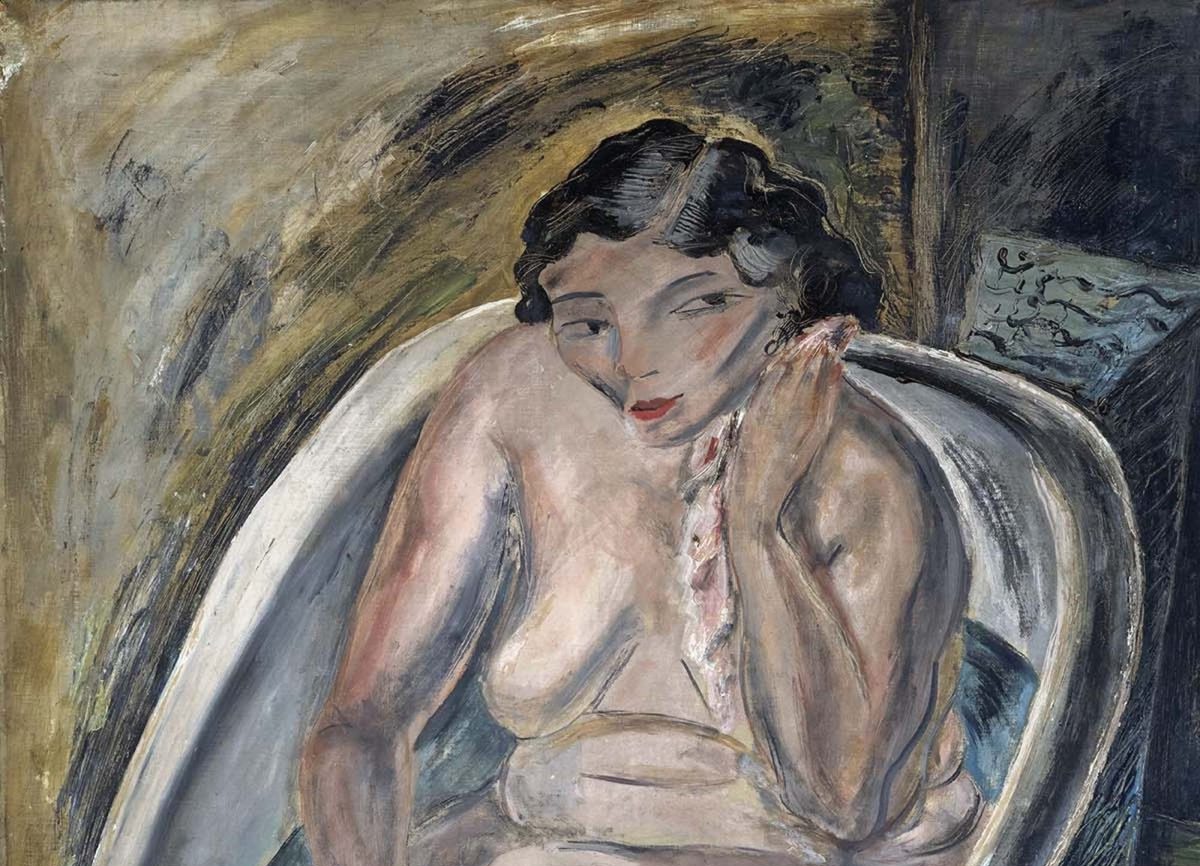
In the summer of 1927, Esther Estelle Pressoir, a 24-year-old artist from Rhode Island who went by “Stella,” set out by bike from the west coast of France for Italy, a journey of some 12,000 miles. A graduate of the Rhode Island School of Design (RISD), Pressoir had recently attended the Art Students League in New York, and wanted to experience the art of Europe. Fellow students had scoffed. According to Suzanne M. Scanlan, author of Esther Pressoir: A Modern Woman’s Painter, the young artist was determined “to prove she could ‘do’ the Grand Tour on a not-so-grand budget.” The experience proved decisive to her life, and her legacy.
Pressoir graduated from RISD in 1923. Nearly a century later, Scanlan, a professor and art historian at the school, learned about Pressoir via a newspaper clipping about her bicycling adventure in the library archive, illustrated by a woodblock print she had made. When Scanlan went looking for more, she found that Pressoir’s nephew, Leon Dulac, had saved nearly everything in her studio after she died. The resulting book is a thorough and captivating look at Pressoir’s life and work between world wars.

Pressoir embarked on her journey to Italy dressed in a turquoise pajama top, skirt, and black leather jacket, with a cigarette as an accessory, as Scanlan notes. In her handwritten journals (pages of which provide fun endpapers for the book) Pressoir describes hauling “30 lbs of paper, drawings & pencils” on her bike, on top of other necessities like clothing. In short, art-making was central to the adventure. Alongside her written account of the trip, Pressoir created “600 pencil and ink drawings, many of which she later translated into paintings and prints.”
One of those works is “Through Andorra” (c. 1928), a linocut depicting a woman pushing her bicycle through a mountain gap. With a cross atop one peak and rays of sunlight filling the sky, the image unmistakably recalls a holy pilgrimage. Though her bike adventure comprised just seven months of Pressoir’s long life — she died in 1986 — it’s essential to Scanlan’s compelling story of her as a modern woman and modernist artist: trailblazing, independent, brave.
Indeed, Pressoir was courageous as a traveler, an artist, and a queer woman. In Europe, she developed a charming drawing style influenced by Expressionism that carries through diverse media, including decades of illustrations she contributed to the New Yorker, along with paintings, prints, and ceramics. She created nudes of herself, models, and lovers, including a dancer from Harlem called Florita. Pressoir, Scanlan writes, “made dozens of pictures of Florita” at a time when White artists rarely depicted Black subjects, particularly with such intimacy. She would keep many of these works with her for the rest of her life.
Before leaving Europe, Pressoir sold her bike and bought, in her words, “a perfectly irresistible tiny silver cigarette case … as a gesture of feminism.” Indeed, in the expressionistic painting “Self-Portrait, Smoking” (c. 1935), she depicts herself tucked inside a womb-like space that rhymes with a spiral of smoke rising from the cigarette she holds with casual cool. She is a new kind of woman: sensual, self-assured, and self-created.


Esther Pressoir: A Modern Woman’s Painter (2024), written by Suzanne M. Scanlan and published by Lund Humphries, is available for purchase online and in bookstores.

